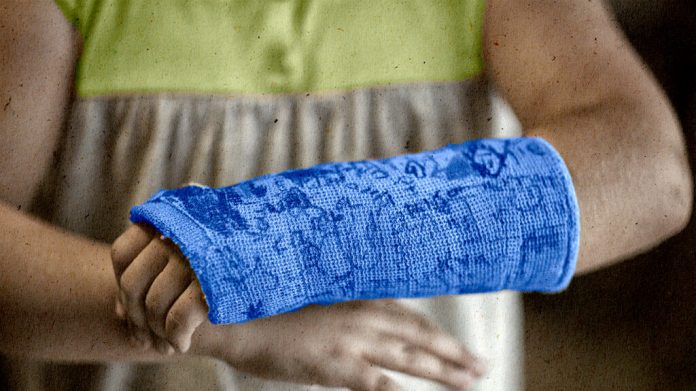Using metal K-wires (commonly known as ‘pins’) to hold broken wrist bones in place while they heal are no better than a traditional moulded plaster cast, finds a study published by The BMJ today.
Wrist fractures are common, especially in older women. If the bone fragments have displaced (moved out of their normal alignment), they often require “manipulation” followed either by surgery to insert metal wires or plates, or a moulded cast as a non-surgical alternative, to hold the bones in position while they heal.
Surgery is expensive and carries risk for the patient, whereas a moulded plaster cast is cheaper but may not provide the same functional outcome.
To find out which of these treatments is superior, researchers tracked the progress of 500 adults with a displaced wrist fracture at 36 NHS hospitals between January 2017 and March 2019.
Patients were randomly allocated to receive a cast (255) or surgical fixation with K-wires (245) after manipulation of their fracture. Their average age was 60 years and 417 (83%) were women.
The main (primary) outcome measure was the Patient Rated Wrist Evaluation (PRWE) score at 12 months, which included questions about pain, function and disability, and gave an overall score from 0 (best) to 100 (worst).
Other (secondary) outcomes were PRWE score at three and six months, quality of life, and complications, including the need for later surgery.
A total of 395 (79%) patients completed the follow-up. While both groups showed improvement over the 12-month period, no statistically significant difference was seen in the PRWE score at three, six or 12 months (average score 21.2 in the cast group compared with 20.7 in the K-wire group).
Health related quality of life also showed a similar pattern of recovery in both groups over time, and again the difference was not significant.
However, one in eight patients treated with a moulded cast needed later surgery for loss of fracture position in the first six weeks after their injury compared with just one patient in the K-wire group.
Other complications were rare, with no evidence of a difference between the two groups (28 in the cast group compared with 22 in the K-wire group).
The researchers acknowledge some limitations, including the fact that neither the treating clinicians nor the participants could be blind to the interventions.
Nevertheless, they say this was a large trial involving adults of all ages and the results are based on validated patient reported outcomes, reflecting the care provided across a healthcare system.
As such, they conclude: “Surgical fixation with K-wires did not provide better wrist function at 12 months compared with a moulded cast, indicating that a cast is an acceptable first line treatment following manipulation of a dorsally displaced fracture of the distal radius.”
They add: “Cast treatment avoids the expense and risks of surgical fixation for seven out of eight patients. However, careful follow-up is needed as one in eight patients treated with a cast required subsequent surgical intervention as the fracture reduction could not be maintained.”















